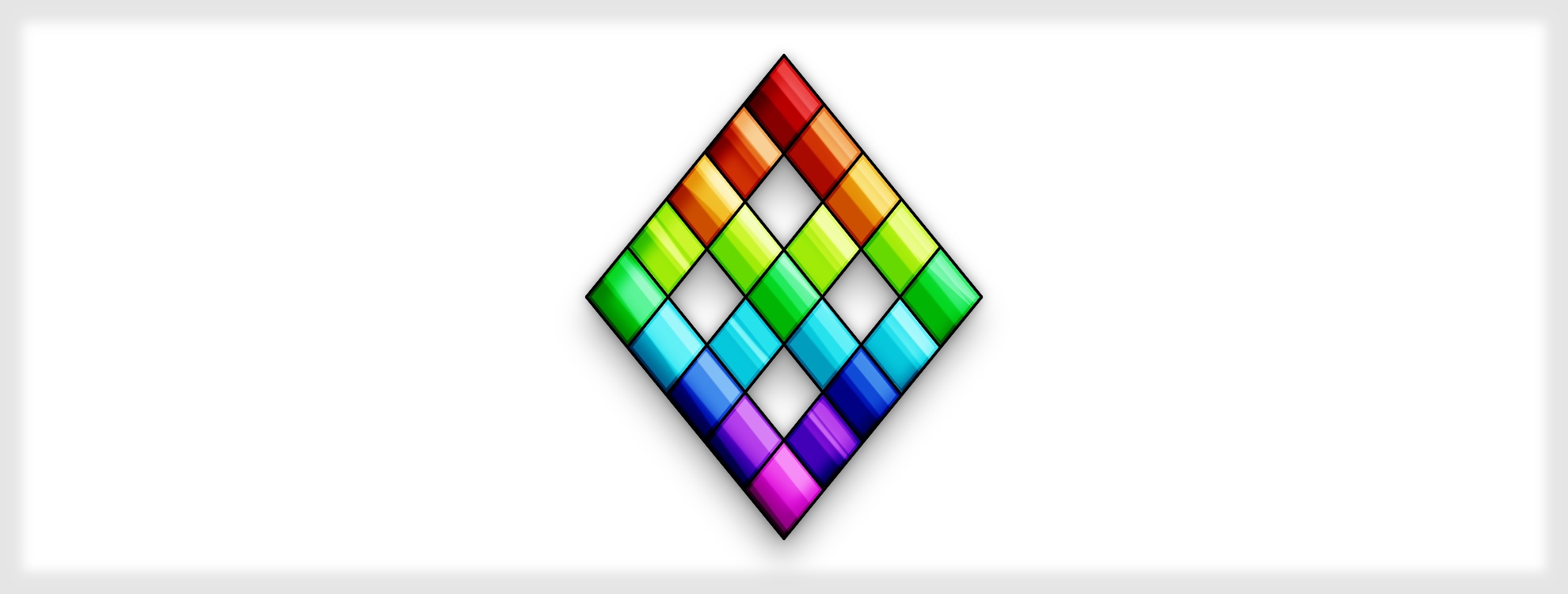Introduction
In Asharith there exist four kinds of Divine beings. These beings are represented by the diamond-shaped Adamant, which is the primary holy simbol of the Adamantine church. There are the Deific Supra, who are regarded as Gods of good nature. They stood beside mortal kind during the war of Great Ruin, fighting against their own brothers and sisters to preserve their creation. The Supra were led by the God now located at the top of the Adamant,
Fable, The Tale Spinner.
The Deific Infra were those who tried to wipe out mortal kind after the Seven Perjurers decided to reject the Divine and renounced all ties to the higher planes. They were lead by
Gor'Hazj, The Great Ruiner, and now each reside on their own lower planes, imprisoned forever by the Supra, together with their demonic and fiendish servants, though sometimes they find gates large enough to send their servants through.
During the Age of Thread, the Supra and Infra deities created great wonders for their followers to worship them at. These were used after the war of Great Ruin as both places of rest, in the case of the Supra, and gates to their prisons, in the case of the Infra. The Supra Wonders are often referred to as "Aests" while the Infra Wonders are referred to as "Hibers".
The Deific Media are the three greater Gods who stayed neutral during the war of Great Ruin. These Gods are still able to physically manifest in Asharith on their own, but choose not to do so as they prefer not to interfere with mortals. The most prominent of the Media is
the nameless Raven Queen, who serves as the Godess of Death.
Lastly are the Deific Imus, who are regarded as "lesser" deities. Those who are not represented by the adamant and are (in theory) found in tho holes in the Adamantine symbol. They come in both good and evil forms, and, while they do not have any Aests or Hibers, they do have, speckled throughout Asharith, many tombs, temples and holy sites to represent their divine status.
The Church rules in every continent of Asharith, but most prominently in
Opula. The further from the
Capital of Knowledge you go, the less authority the church has. The only exception to this rule is northern
Moy'Rodina, which does still adhere to the church even though their cities are very cut off from the rest of the world due to the cold.
List of Greater Gods (in order of their position on the Adamant)
The Deific Supra
- Fable, The Tale Spinner. The God of creation, stories and the Humans.. His symbol is a golden, feathered pen. His Aest is the Great Library, where stories from all around Asharith are kept.
- Luna, The Three Sisters. The Goddess of the moons and the Elves.. Her symbol are three spheres surrounded by one larger sphere. Her Aest is Fasthur, which can always be seen in the sky.
- Pelor, The Dawn Bringer. The God of the sun and time.. His symbol is a sun containing a pocket watch. His Aest are The Basking Grounds in Solaria, where the first sun dial is still kept.
- Deilur, The Blade Sworn. The God of war and courage.. Their symbol is a sword crossed with a battle-axe. Their Aest is The Field of a Thousand Swords where the final battle of the war of Great Ruin was fought.
- Bahamut, The Platinum Dragon. The God of the dragons and justice.. His symbol is a platinum dragon's head holding a set of scales. His Aest is the massive cave system located within Moy'Rodina's Platinum Den
- Galdur, The Architect Arcane. The Goddess of arcana.. Her symbol is a pyramid with a hole at the center surrounded by trapezoids. Her Aest are the Great Pyramids of Galdur.
- Fortun, The Chance Bearer. Her symbol is a coin. Her Aest are the Luckstones.
- Yggdrasil, The Great Tree. The God of nature and the Fey.. Their symbol is a tree enclosed in a circle. Their Aest is the Drasil of Fora'thin Domuna, acting as the prime gate between the material plane and the Feywild.
- Helm, The World Anvil. The God of craft and the Dwarves, his symbol is an anvil. His Aest is the giant Opulan mountain known as The World's Anvil.
The Deific Media
- Konn'Aïser, The All-Knowing. The God of knowledge and the mind.. His symbol is a question mark and his wonder is The Adamant Archive.
- The Raven Queen. The Goddess of death.
- Korwyn, The Storm Ruler. The God of storms and anger.
The Deific Infra
Gor'Hazj, The Ruin. His symbol is a ruined banner. His Hiber is the volcano known as The Eye of Ruin.
Vecna, The Risen.
Asmodeus, The Pit. The God of the nine hells and Devil kind.
Gruumsh, The Horde. The God of Monsters and the Orcs.
Anord, The Jester. The God of chaos and shadows.
Yest, The Hunger. The God of greed and gluttony.
Kjott, The Butcher. The Goddess of slaughter and violence.
Void, The Unknown. The God of unknown and the beyond.
Aracna, The Spider. The Goddess of intrigue and lies.
List of Lesser Gods or the Deific Imus (in no particular order)
note that this list is incomplete and constantly expanding as there is an unlimited amount of lesser Gods. Imus are born of the belief in them, they draw upon the powers of the greater Gods though are more like demigods themselves.
The Upper Imus
- Basque, The Jolly Reveller. A God of feasts and wine.
- Domol, The Melodic Fiddler. A God of music and song.
- Roam, The Traveller. A God of travel and mischief.
The Lower Imus



Comments